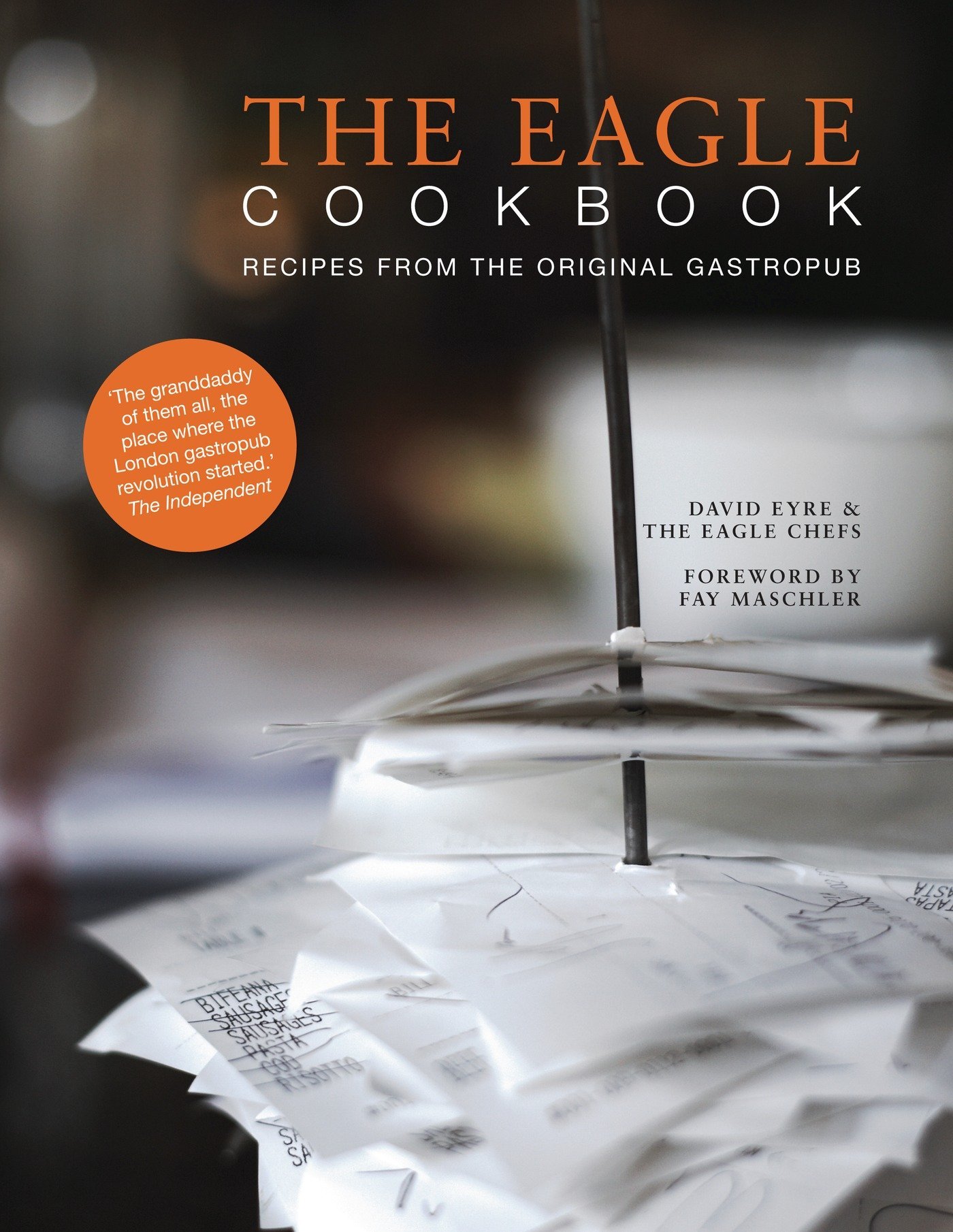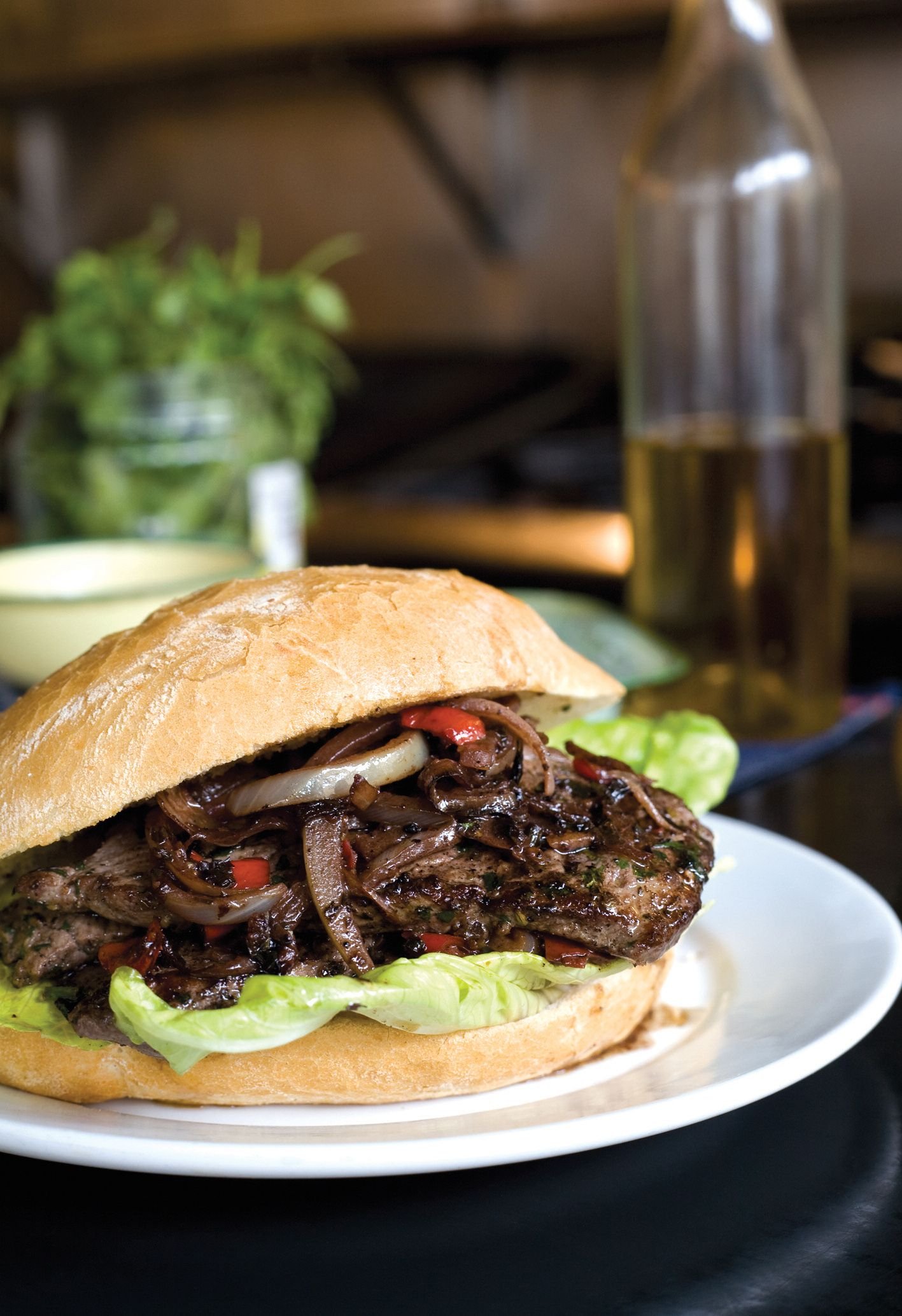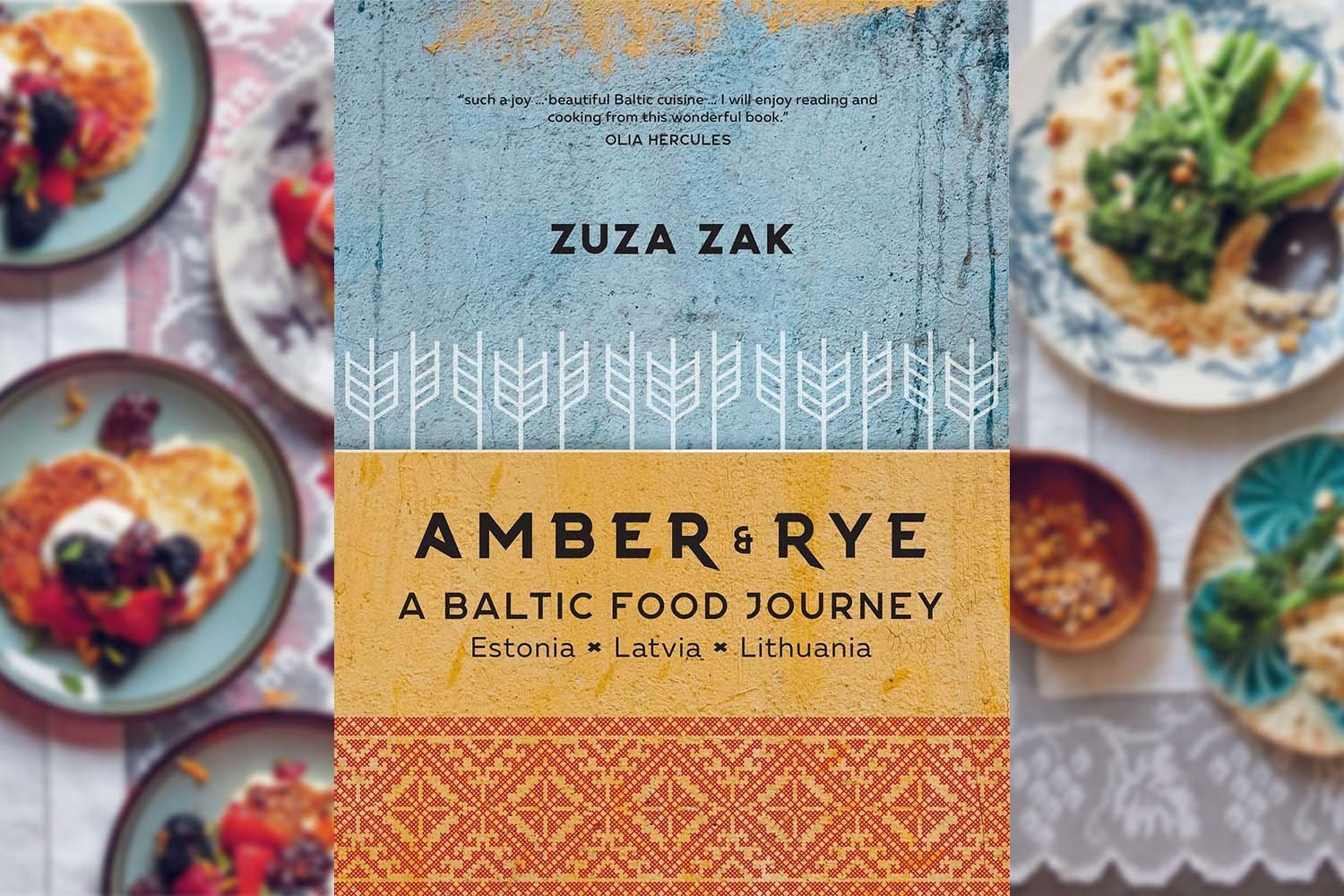Advertisement
Behind The Cookbook: The Eagle Cookbook
26 April 2022 · Behind the Cookbook
By Susan Low
The Eagle Cookbook was first published as Big Flavours & Rough Edges in 2001. That name, incidentally, came from an enthusiastic review by Jonathan Meades, who was then restaurant critic of the Times. The updated edition, with additional recipes from Eagle alumni and new food photography by Lara Holmes, was published in 2009.
The Eagle hatched the concept of the gastropub as we know it. It also fledged the careers of numerous chefs who went on to open their own restaurants and continue the trend for the sort of gutsy, southern Mediterranean-influenced, well-sourced but unfussed-around-with food that has brought The Eagle so much acclaim over the decades.
We talk to some of the chefs who have worked in The Eagle’s famed open kitchen to find out what it was like to work at the ground-breaking pub, and what they think lies behind The Eagle’s continued success.
The gastropub as we know it came to life in a run-down, rough-edged pub in London’s Farringdon neighbourhood. Like many of the world’s best inventions, it came about by accident rather than design. Opened by restaurant manager Michael Belben and chef David Eyre in 1991, it celebrated 30 years in the business on January 20, 2021 – no mean feat in a city like London, where diners have notoriously short attention spans and fickle appetites.
The Eagle has seen out five prime ministers, outlasted Cool Britannia, survived the 1990s recession, withstood the Great Crash of 2008, navigated Brexit, and managed to make it through the Coronavirus pandemic with its shabby-chic interior and egalitarian attitude still intact. And, yes, the Bife Ana steak sandwich is still on the menu every day and, no, you cannot have dessert – none are served here.
The Eagle had landed, and critics couldn’t get enough of the place. Without really meaning to, it became the template for the legions of gastropubs that would open in the capital and beyond in the following years and decades. The nuts and bolts – chalked-up blackboard menu, no-nonsense service, gutsy cooking based on well-sourced ingredients, an open kitchen, hand-pump real ale and a good wine list, bare-boards simplicity – are now so deeply ingrained that it’s hard to imagine a time BG – Before Gastropub.
Diana Henry, writing in The Gastropub Cookbook, described The Eagle as “the grand-daddy of them all, the place where the London gastropub revolution started,” and that its “blend of raw energy, attitude and theatre – the result of a truly open kitchen – changed the face of London dining forever.”
The location of The Eagle was a not-yet-hip part of London that also just happened to be home to trendsetting men’s mag Arena and to the Guardian and Observer newspapers. Observer journalist Kathryn Flett, who wrote a review that was used as the foreword for Big Flavours & Rough Edges, described the atmosphere as “a kind of London ‘Cheers’.” Of the food, she wrote, “At The Eagle I have eaten tons of very fine, no-fuss modern food … meals characterised by David Eyre’s original culinary blueprint: top-quality ingredients prepared with exemplary ease and simplicity and served in satisfyingly old-fashioned proportions.”
A “wild west” kitchen atmosphere
But what was it like to be on the other side of the bar, to be grilling and roasting in that prototypical open kitchen? Chef Jake Hodges, who went on to open Moro restaurant with Samantha and Samuel Clark, then Cígala restaurant in London’s Bloomsbury, describes his time in The Eagle’s kitchen as like “the wild west of catering.” The atmosphere, he says, “was fantastic. There were no rules, particularly, and it was a real team, where people helped each other: kitchen to bar, bar to kitchen. A great camaraderie.”
Hodges describes the style of cooking as, “Good ingredients cooked well. Peasant food. Robust flavours. Nothing fancy, nothing pretty, although it was very good-looking.”
So, what does he put The Eagle’s success down to? “First, the simplicity. The menu was short, and when things ran out, they ran out. You ordered at the bar and were served dishes as they were ready, not necessarily at the same time. Second, the daily-changing menu. The only constant was the Bife Ana steak sandwich, so you never got bored, but there was a recognisable identity. Third, the atmosphere was busy and loud, and you thought you were at the heart of something going on. Fourth, it was unashamedly what it was: didn’t take reservations, only took cash, had odd crockery and furniture. It believed in what it was and never followed a trend or fad.”
“We knew the food was great”
Ruth Quinlan worked at The Eagle under head chef Tom Norrington-Davies and compiled the recipes for Big Flavours & Rough Edges, working with the publisher, Headline. Quinlan points to the diverse backgrounds of The Eagle’s chefs as a key to its identity, and its success.
“The style of food was informed by all the chefs who worked there,” she says. David Eyre was born and raised on sugar plantations in Mozambique and Malawi, and his cooking had a recognisable Portuguese influence. Over the years, other chefs came from Brazil, Andalucía, Lisbon, New Zealand, Italy – and, of course, the UK. “As the menu built up, people would bring their own stuff along to it and were encouraged to do so. It wasn’t too prescribed,” Quinlan says.
The cooking was ground-breaking stylistically, too. “It always looked as though there wasn’t much artistry in the way we presented the food,” says Quinlan, “but I always thought it looked beautiful. It was colourful and it wasn’t fussed-around-with. The fact that the menu changed every day might have meant that we hadn’t got every dish down to a fine art, but it kept us chef so interested and inspired – and we took real pride in the food because we knew it was great.”
For Quinlan, particular recipes shout ‘The Eagle’ the loudest, among them Grilled Squid Piri-piri. “Piri-piri gets a bad name but this was roast peppers and chillies all whizzed up with coriander seeds – and that’s partly your marinade and partly your sauce at the end.”
Other highlights are “the beautiful big stews. Osso Buco with Risotto Milanese & Gremolata. And we’d do a big Paella Valenciana, where you’d bosh out 20 portions from one pan, and when it was gone, it was gone. You didn’t worry if you had to scratch something off the menu. Lovely whole grilled fish like Charmoula Mackerel was always such a pleasure – none of these little fillet things. And there was always a lovely roast, such as Tuscan-style Roast Pork, at the weekend.” The food, she says, “just blew the minds of the Guardian staff who ate there.”
“A stud farm for chefs”
The list of chefs who have worked at The Eagle reads like a who’s who of great British chefs. As Mike Belben puts it in the introduction: “Over the years, a host of enthusiastic, intelligent young chefs have squeezed into our tiny kitchen. Two at a time, they have catered for as many as 120 customers in a busy lunchtime session. So many new kitchens have been conceived here that David [Eyre] calls it a ‘stud farm for chefs’, a metaphor which also hints at some of the fun we’ve had cooking the food!”
‘Stud farm’ or not, The Eagle did fledge the career of many a talented chef. Among those who went on to open their own places (all in London) are:
Amanda Pritchett went on to open The Lansdowne in Primrose Hill.
Samantha and Samuel Clark met at The Eagle and went on to open the influential Moro restaurant.
Jake Hodges, a River Café alumnus, went on to open Cígala in Bloomsbury.
Margot Henderson set up The French House Dining Room with husband Fergus Henderson before opening Rochelle Canteen. In November 2022, Henderson is set to open The Three Horseshoes, a pub with lodgings in Somerset.
Trish Hilferty and Harry Lester set up the kitchen at The Fox with Mike Belben.
George Manners opened The Atlas pub near Earls Court.
Tom Norrington-Davies became head chef at Great Queen Street.
During its three decades, The Eagle has inspired, fed, nourished, and refreshed multitudes. It has innovated and evolved at its own pace – yet remains essentially the same, in an ‘if it ain’t broke, don’t fix it’ kind of way.
There has been one major innovation, though: they now take reservations for parties of four or more...
Try some of the most popular recipes from The Eagle Cookbook
Sign up for ckbk's weekly email newsletter
Related posts
Behind the Cookbook
Annette Ogrodnik Corona talks about Easter traditions and The New Ukrainian Cookbook.
Behind the Cookbook
Christos Sourligas on the story behind the creation of My Big Fat Greek Cookbook.
Behind the Cookbook
Zuza Zak gives a behind-the-scenes look at the making of Amber & Rye.
Advertisement







